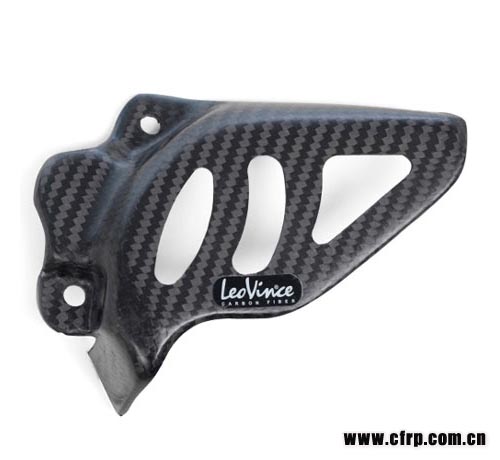复合材料发展历史
By www.carbonfiber.com.cn
很久以前,人类已经开始利用天然聚合物如牛羊角、蜡和沥青等。随着时间的发展,天然聚合物的性能已经不能满足人类的需要,由此,一些可改进天然聚合物性能技术(如纯化和改性)相继产生。

Tenganan村庄的房屋都覆盖了Ijuk纤维
复合材料发展史摘要
1847年 瑞典化学家Berzelius,这位现代化学的奠基人之一,首次在实验室发明了饱和聚酯。
1894年 Vorlander在实验室着手对乙二醇马来酸的研究工作,成为记录在案最早的一位研究不饱和聚酯树脂的化学家。
1920年 先锋人物Wallace Carothers开始对乙二醇与不饱和脂肪酸合成的聚酯的研究工作。
1922年 首个聚酯树脂被研发成功。
1930年末 研究人员Bradley, Kropa 和Johnson三人共同研究不饱和聚酯的固化情况,在报告中提高,固化后,它们可以分为可熔性和不可溶性(热固性)。
1935年 欧文斯科宁(Owens Corning)首次引入玻璃纤维
1941年 不饱和聚酯首次投入美国的压铸商业市场
1942年 美国橡胶公司开发出玻璃纤维增强聚酯树脂作为基体的复合材料。
1946年 船艇制造商开始意识到纤维增强复合材料为整个工业带来了何种变革,在这年中首个复合材料船身的游艇在美国建成,还首次引入了冷固化系统。
1950年早期 闭模工艺开发完成。
1951年中期 不饱和聚酯树脂在欧洲投入商业化生产。
1963年 碳纤维增强材料引入市场
到了19世纪,随着科学技术在物理化学领域的应用,自然界中的天然聚合物的性能已经不能满足工业发展对材料性能的需要,这使当时的新型材料-早期的复合材料得到飞速的发展。
复合材料是由不同元素组成的结构,结果是形成了一加一等于三。对于复合材料的理解,貌似昆虫、鸟和蝙蝠等动物比我们要理解的更透彻一些,它们将这个原理应用到筑窝的过程中,以防天敌的攻击。原始人用动物粪便、 粘土、 稻草和树枝组成复合材料结构,这是人类将复合材料应用到生活中具有历史意义的一步。甚至据人们传说,圣经中的诺亚方舟也是由煤沥青和稻草混合制成的,这也许真的是被报道出的复合材料船舶的鼻祖,当然这也仅是传说。

LeoVince生产的碳纤维摩托部件
之后经过了几千年,第二次复合材料在工业应用的浪潮在1830年席卷西欧,工业领域中的先锋人物在发现了复合材料这种新兴材料之后,争相投入对它了研发工作,包括:木质层压板、合金和钢筋增强混凝土。在17世纪,英国人John Osborne通过天然聚合物牛羊角制备了模塑制品。到19世纪,模塑牛羊角工业开始繁荣壮大,其大多数制品都卖给了当时的中产阶级。

碳纤维在特斯拉Roadster电动汽车上占有很大比重
随着天然聚合物的不断发展,人们开采了由热带橡树产生的树胶,尤其是在1847年Bewley发明了塑料挤出机,可以用树胶制备橡胶和古塔橡胶,在1850年开始采用这种古塔橡胶来保护隔离水线电报电缆。
谈到复合材料,就不能不说起英国。在复合材料工业发展过程当中,很多重要事件都与英国密切相关。
汉考克托马斯和他的兄弟查尔斯对橡胶进行广泛的研究,终于在1839年发明了硫化橡胶,他们也因这一发明而闻名于世。同时美国的古德意尔也独立地发明了硫化橡胶。这一发明是第一次成功地对天然聚合物的化学修饰而产生的模塑材料。

空客公司在飞机上大幅使用复合材料
在1850s年代,在美国已经开始采用虫胶和木粉混合来展示照片,这就是最早期的照片。直到1940s年代虫胶的合成物才被用来制备唱片。
最早的聚合物铸件是由法国Lepage发明。他采用胚乳和木粉生产了装饰用的Bois Durci 饰板, 还可以和木粉一起混合使用的组分包括海草、泥煤、纸和皮革制品。在1855年英国发布的有近似10%的专利为模塑材料,但是在这些专利中最大的突破是采用硝酸处理地纤维素纤维制备的半合成的塑料材料-硝酸纤维素。
人类在远古时代就从实践中认识到, 可以根据用途需要,组合两种或多种材料,利用性能优 势互补,制成原始的复合材料。所以,复合材料既是一 种新型材料,也是一种古老的材料。复合材料的发展历 史,可以从用途、构成、功能,以及设计思想和发展研 究等,大体上分为古代复合材料和现代复合材料两个阶 段。 古代复合材料在西安东郊半坡村仰韶文化遗址, 发现早在公元前2000年以前,古代人已经用草茎增强 土坯作住房墙体材料。
在金属基复合材料方面,中国也有高超的技艺。如越王剑,是金属包层复合材料制品,不仅光亮锋利,而 且韧性和耐蚀性优异,埋藏在潮湿环境中几千年,出土 后依然寒光夺目,锋利无比。
5000年以前,中东地区用芦苇增强沥青造船。古 埃及墓葬出土,发现有用名贵紫檀木在普通木材上装饰 贴面的棺撑家具。古埃及修建金字塔,用石灰、火山灰 等作粘合剂,混和砂石等作砌料,这是最早最原始的颗 粒增强复合材料。 但是,上述辉煌的历史遗产,只是人类在与自然界 的斗争实践中不断改进而取得的,同时都是取材于天然 材料,对复合材料还是处于不自觉的感性认识阶段。
现代复合材料20世纪40年代,玻璃纤维和合成 树脂大量商品化生产以后,纤维复合材料发展成为具有 工程意义的材料,同时相应地开展了与之有关的研究设 计工作。这可以认为是现代复合材料的开始,也是对复 合材料进入理性认识阶段。早期发展出的现代复合材 料,由于性能相对较低,生产量大,使用面广,被称之 为常用复合材料。后来随着高技术发展的需要,在此基 础上又发展出性能高的先进复合材料。
常用树脂基复合材料第一次世界大战前,用胶粘 剂将云母片热压制成人造云母板。20世纪初市场上有 虫胶漆片与纸复合制成的层压板出售。但真正的纤维增 强塑料工业,是在用合成树脂代替天然树脂、用人造纤 维代替天然纤维以后才发展起来的。
1847 The Swedish chemist, Berzelius, one of the founders of modern chemistry, makes the first laboratory cook of a saturated polyester
1894 Vorlander studies glycol maleates in the laboratory, the earliest record of chemical work with unsaturated polyesters
1920s The pioneering Wallace Carothers studies polyesters prepared from ethylene glycol and unsaturated acids
1922 The first polyester resins are produced as lacquers
1930s (late) Researchers Bradley, Kropa and Johnson investigate the curing of (monomer-free) unsaturated polyesters and report them to be insoluble and infusible (thermo set) when cured. Carlton Ellis conducts experiments on using liquid monomers, suchas styrene, to give lower viscosity mixtures which cure much faster than unsaturated polyesters on their own
.
1935 Owens Corning introduces the first fine glass fibers
1941 The first commercial application for unsaturated polyesters is in the USA where they are used for castings
1942 The US Rubber Company develops the first glass fiber reinforced polyester composite. The technology is taken up by the US military in the first commercial application as radomes for housing radar equipment are made by vacuum injection and the resin is cured at high temperatures. The scarcity and high cost of glass fiber restrict applications during this period to defense and aerospace.
1946 Boat builders start to realize the potential that reinforced composites offer to their industry, and in this year the first commercial boat hull is built in the USA. The first cold curing systems are introduced
1950s (early) The first closed molding processes are patented
1951/2 Commercial production of unsaturated polyester resins begins in Europe. A curing system that leaves tack-free surfaces is developed. The first chopped strand mat is introduced. The composites industry now has glass reinforcement in a totally compatible form; products that cold cure in open moulds without any air inhibition; and, most importantly, lower cost raw materials - as polyester resins and glass reinforcements become mass produced.
1963 Carbon fiber reinforcement is first introduced
A brief history of composites
Composites are structures that are made up of diverse elements, with the principle being that the sum of the whole is greater than the sum of its component parts (i.e. 1+1=3). An understanding of composites seems to be inherent in animal behavior, evident in the nest building of birds, bats and insects, for example. Primitive man used the basic materials that were available to him such as animal dung, clay, straw and sticks to form composite structures that were literally the first building blocks of civilization. Even the biblical Noah's Ark was allegedly made of coal-tar pitch and straw, which could perhaps be the first reported construction of a reinforced composites boat! Moving forward several thousand years, and the second wave of the industrial revolution that swept though western Europe from the1830s onwards, saw new found industries developing their own composite technologies such as laminated wood, alloyed
metals and steel reinforced concrete. The earliest polymer castings were developed by Lepage in France using albumen, blood and wood flour to produce decorative plaques. The first semi - synthetic plastics were produced when cellulose fibres were modified with nitric, acid to form cellulose nitrate - or celluloid as it was to become known.
复材在线
很久以前,人类已经开始利用天然聚合物如牛羊角、蜡和沥青等。随着时间的发展,天然聚合物的性能已经不能满足人类的需要,由此,一些可改进天然聚合物性能技术(如纯化和改性)相继产生。

Tenganan村庄的房屋都覆盖了Ijuk纤维
复合材料发展史摘要
1847年 瑞典化学家Berzelius,这位现代化学的奠基人之一,首次在实验室发明了饱和聚酯。
1894年 Vorlander在实验室着手对乙二醇马来酸的研究工作,成为记录在案最早的一位研究不饱和聚酯树脂的化学家。
1920年 先锋人物Wallace Carothers开始对乙二醇与不饱和脂肪酸合成的聚酯的研究工作。
1922年 首个聚酯树脂被研发成功。
1930年末 研究人员Bradley, Kropa 和Johnson三人共同研究不饱和聚酯的固化情况,在报告中提高,固化后,它们可以分为可熔性和不可溶性(热固性)。
1935年 欧文斯科宁(Owens Corning)首次引入玻璃纤维
1941年 不饱和聚酯首次投入美国的压铸商业市场
1942年 美国橡胶公司开发出玻璃纤维增强聚酯树脂作为基体的复合材料。
1946年 船艇制造商开始意识到纤维增强复合材料为整个工业带来了何种变革,在这年中首个复合材料船身的游艇在美国建成,还首次引入了冷固化系统。
1950年早期 闭模工艺开发完成。
1951年中期 不饱和聚酯树脂在欧洲投入商业化生产。
1963年 碳纤维增强材料引入市场
到了19世纪,随着科学技术在物理化学领域的应用,自然界中的天然聚合物的性能已经不能满足工业发展对材料性能的需要,这使当时的新型材料-早期的复合材料得到飞速的发展。
复合材料是由不同元素组成的结构,结果是形成了一加一等于三。对于复合材料的理解,貌似昆虫、鸟和蝙蝠等动物比我们要理解的更透彻一些,它们将这个原理应用到筑窝的过程中,以防天敌的攻击。原始人用动物粪便、 粘土、 稻草和树枝组成复合材料结构,这是人类将复合材料应用到生活中具有历史意义的一步。甚至据人们传说,圣经中的诺亚方舟也是由煤沥青和稻草混合制成的,这也许真的是被报道出的复合材料船舶的鼻祖,当然这也仅是传说。

LeoVince生产的碳纤维摩托部件
之后经过了几千年,第二次复合材料在工业应用的浪潮在1830年席卷西欧,工业领域中的先锋人物在发现了复合材料这种新兴材料之后,争相投入对它了研发工作,包括:木质层压板、合金和钢筋增强混凝土。在17世纪,英国人John Osborne通过天然聚合物牛羊角制备了模塑制品。到19世纪,模塑牛羊角工业开始繁荣壮大,其大多数制品都卖给了当时的中产阶级。

碳纤维在特斯拉Roadster电动汽车上占有很大比重
随着天然聚合物的不断发展,人们开采了由热带橡树产生的树胶,尤其是在1847年Bewley发明了塑料挤出机,可以用树胶制备橡胶和古塔橡胶,在1850年开始采用这种古塔橡胶来保护隔离水线电报电缆。
谈到复合材料,就不能不说起英国。在复合材料工业发展过程当中,很多重要事件都与英国密切相关。
汉考克托马斯和他的兄弟查尔斯对橡胶进行广泛的研究,终于在1839年发明了硫化橡胶,他们也因这一发明而闻名于世。同时美国的古德意尔也独立地发明了硫化橡胶。这一发明是第一次成功地对天然聚合物的化学修饰而产生的模塑材料。

空客公司在飞机上大幅使用复合材料
在1850s年代,在美国已经开始采用虫胶和木粉混合来展示照片,这就是最早期的照片。直到1940s年代虫胶的合成物才被用来制备唱片。
最早的聚合物铸件是由法国Lepage发明。他采用胚乳和木粉生产了装饰用的Bois Durci 饰板, 还可以和木粉一起混合使用的组分包括海草、泥煤、纸和皮革制品。在1855年英国发布的有近似10%的专利为模塑材料,但是在这些专利中最大的突破是采用硝酸处理地纤维素纤维制备的半合成的塑料材料-硝酸纤维素。
人类在远古时代就从实践中认识到, 可以根据用途需要,组合两种或多种材料,利用性能优 势互补,制成原始的复合材料。所以,复合材料既是一 种新型材料,也是一种古老的材料。复合材料的发展历 史,可以从用途、构成、功能,以及设计思想和发展研 究等,大体上分为古代复合材料和现代复合材料两个阶 段。 古代复合材料在西安东郊半坡村仰韶文化遗址, 发现早在公元前2000年以前,古代人已经用草茎增强 土坯作住房墙体材料。
在金属基复合材料方面,中国也有高超的技艺。如越王剑,是金属包层复合材料制品,不仅光亮锋利,而 且韧性和耐蚀性优异,埋藏在潮湿环境中几千年,出土 后依然寒光夺目,锋利无比。
5000年以前,中东地区用芦苇增强沥青造船。古 埃及墓葬出土,发现有用名贵紫檀木在普通木材上装饰 贴面的棺撑家具。古埃及修建金字塔,用石灰、火山灰 等作粘合剂,混和砂石等作砌料,这是最早最原始的颗 粒增强复合材料。 但是,上述辉煌的历史遗产,只是人类在与自然界 的斗争实践中不断改进而取得的,同时都是取材于天然 材料,对复合材料还是处于不自觉的感性认识阶段。
现代复合材料20世纪40年代,玻璃纤维和合成 树脂大量商品化生产以后,纤维复合材料发展成为具有 工程意义的材料,同时相应地开展了与之有关的研究设 计工作。这可以认为是现代复合材料的开始,也是对复 合材料进入理性认识阶段。早期发展出的现代复合材 料,由于性能相对较低,生产量大,使用面广,被称之 为常用复合材料。后来随着高技术发展的需要,在此基 础上又发展出性能高的先进复合材料。
常用树脂基复合材料第一次世界大战前,用胶粘 剂将云母片热压制成人造云母板。20世纪初市场上有 虫胶漆片与纸复合制成的层压板出售。但真正的纤维增 强塑料工业,是在用合成树脂代替天然树脂、用人造纤 维代替天然纤维以后才发展起来的。
1847 The Swedish chemist, Berzelius, one of the founders of modern chemistry, makes the first laboratory cook of a saturated polyester
1894 Vorlander studies glycol maleates in the laboratory, the earliest record of chemical work with unsaturated polyesters
1920s The pioneering Wallace Carothers studies polyesters prepared from ethylene glycol and unsaturated acids
1922 The first polyester resins are produced as lacquers
1930s (late) Researchers Bradley, Kropa and Johnson investigate the curing of (monomer-free) unsaturated polyesters and report them to be insoluble and infusible (thermo set) when cured. Carlton Ellis conducts experiments on using liquid monomers, suchas styrene, to give lower viscosity mixtures which cure much faster than unsaturated polyesters on their own
.
1935 Owens Corning introduces the first fine glass fibers
1941 The first commercial application for unsaturated polyesters is in the USA where they are used for castings
1942 The US Rubber Company develops the first glass fiber reinforced polyester composite. The technology is taken up by the US military in the first commercial application as radomes for housing radar equipment are made by vacuum injection and the resin is cured at high temperatures. The scarcity and high cost of glass fiber restrict applications during this period to defense and aerospace.
1946 Boat builders start to realize the potential that reinforced composites offer to their industry, and in this year the first commercial boat hull is built in the USA. The first cold curing systems are introduced
1950s (early) The first closed molding processes are patented
1951/2 Commercial production of unsaturated polyester resins begins in Europe. A curing system that leaves tack-free surfaces is developed. The first chopped strand mat is introduced. The composites industry now has glass reinforcement in a totally compatible form; products that cold cure in open moulds without any air inhibition; and, most importantly, lower cost raw materials - as polyester resins and glass reinforcements become mass produced.
1963 Carbon fiber reinforcement is first introduced
A brief history of composites
Composites are structures that are made up of diverse elements, with the principle being that the sum of the whole is greater than the sum of its component parts (i.e. 1+1=3). An understanding of composites seems to be inherent in animal behavior, evident in the nest building of birds, bats and insects, for example. Primitive man used the basic materials that were available to him such as animal dung, clay, straw and sticks to form composite structures that were literally the first building blocks of civilization. Even the biblical Noah's Ark was allegedly made of coal-tar pitch and straw, which could perhaps be the first reported construction of a reinforced composites boat! Moving forward several thousand years, and the second wave of the industrial revolution that swept though western Europe from the1830s onwards, saw new found industries developing their own composite technologies such as laminated wood, alloyed
metals and steel reinforced concrete. The earliest polymer castings were developed by Lepage in France using albumen, blood and wood flour to produce decorative plaques. The first semi - synthetic plastics were produced when cellulose fibres were modified with nitric, acid to form cellulose nitrate - or celluloid as it was to become known.
复材在线